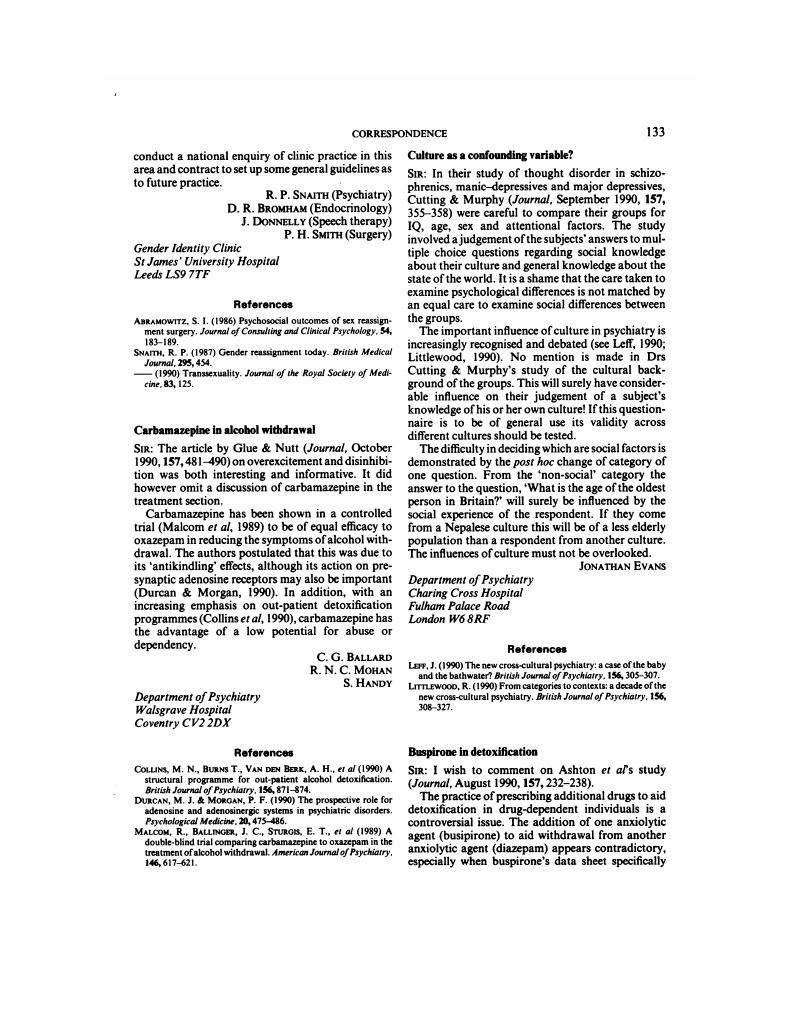No CrossRef data available.
Article contents
Buspirone in detoxification
Published online by Cambridge University Press: 02 January 2018
Abstract
An abstract is not available for this content so a preview has been provided. As you have access to this content, a full PDF is available via the ‘Save PDF’ action button.

- Type
- Correspondence
- Information
- Copyright
- Copyright © The Royal College of Psychiatrists
References
Eison, A. S., Eison, M. S., Riblet, L. A.
et al (1983) Indications of serotonergic involvement in the actions of a potential non-benzodiazepine anxiolytic MJ 1385. Neuroscience Abstracts, 9, 436.Google Scholar
Gardner, M. J. & Altman, D. G. (1990). Confidence and clinical importance in research findings. British Journal of Psychiatry, 156, 472–474.Google Scholar
Rickels, K., Case, W. G., Schweizer, E. G.
et al (1986) Low dose dependence in chronic benzodiazepine users: a preliminary report on 119 patients. Psychopharmacology Bulletin, 22, 407–415.Google Scholar
Sanghera, M. K., McMillan, B. A. & German, D. C. (1985) Buspirone, a non-benzodiazepine anxiolytic, increases locus coerulus noradrenergic neuronal activity. European Journal of Pharmacology, 86, 107–100.Google Scholar
Schweizer, E. E., Amsterdam, J., Rickels, K., et al (1986) Open time of buspirone in the treatment of major depressive disorder. Psychopharmacology Bulletin, 22, 183–185.Google Scholar





eLetters
No eLetters have been published for this article.